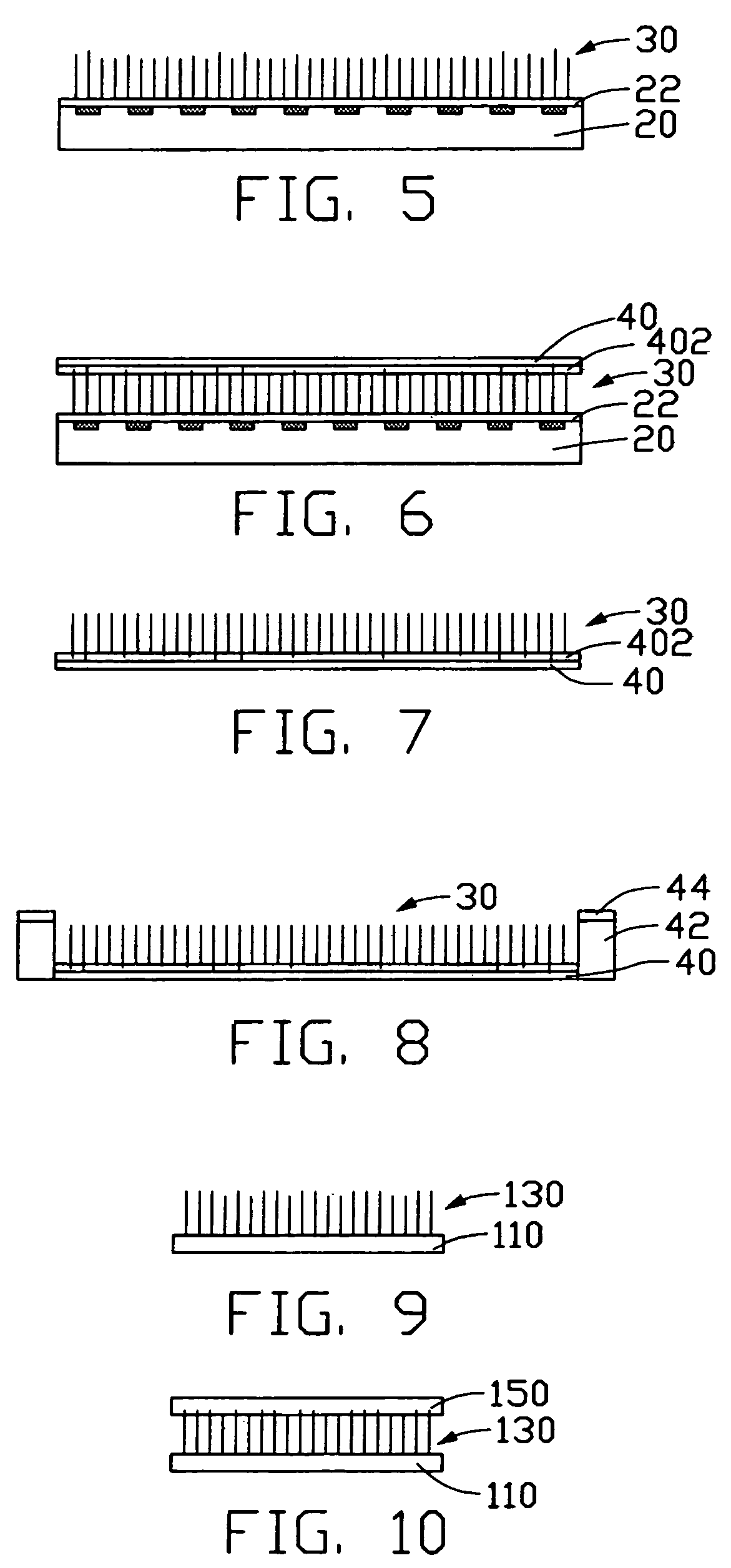Method for depositing carbon nanotubes on a substrate of a field emission device using direct-contact transfer deposition
a carbon nanotube and field emission technology, applied in the field of field emission devices, can solve the problems of reducing the uniformity and stability of electron emission from carbon nanotube bundles, and achieve the effect of improving electron emission uniformity and flatness
- Summary
- Abstract
- Description
- Claims
- Application Information
AI Technical Summary
Benefits of technology
Problems solved by technology
Method used
Image
Examples
Embodiment Construction
[0022]A preferred method for making a carbon nanotube-based field emission device in accordance with the invention will be described below with reference to FIG. 1.
[0023]Step 1 is providing a substrate having a flat surface. A variation in flatness of the surface is less than 1 micron.
[0024]Step 2 is forming a layer of catalyst on the surface of the substrate. Generally, the catalyst is a transition metal such as Fe (iron), Co (cobalt), Ni (nickel) or an alloy thereof. A thickness of the layer of catalyst is in the range from 1 nm to 10 nm, and preferably in the range from 3 nm to 5 nm. Further, the layer of catalyst is preferably annealed at a temperature of 300˜400 degree.
[0025]Step 3 is forming a carbon nanotube array on the layer of catalyst. A preferred chemical vapor deposition process for growing the carbon nanotube array includes the following steps: introducing flowing carbon-containing gas such as ethylene or acetylene, heating the flowing carbon-containing gas to a temper...
PUM
| Property | Measurement | Unit |
|---|---|---|
| flatness | aaaaa | aaaaa |
| voltage | aaaaa | aaaaa |
| thickness | aaaaa | aaaaa |
Abstract
Description
Claims
Application Information
 Login to View More
Login to View More - R&D
- Intellectual Property
- Life Sciences
- Materials
- Tech Scout
- Unparalleled Data Quality
- Higher Quality Content
- 60% Fewer Hallucinations
Browse by: Latest US Patents, China's latest patents, Technical Efficacy Thesaurus, Application Domain, Technology Topic, Popular Technical Reports.
© 2025 PatSnap. All rights reserved.Legal|Privacy policy|Modern Slavery Act Transparency Statement|Sitemap|About US| Contact US: help@patsnap.com



